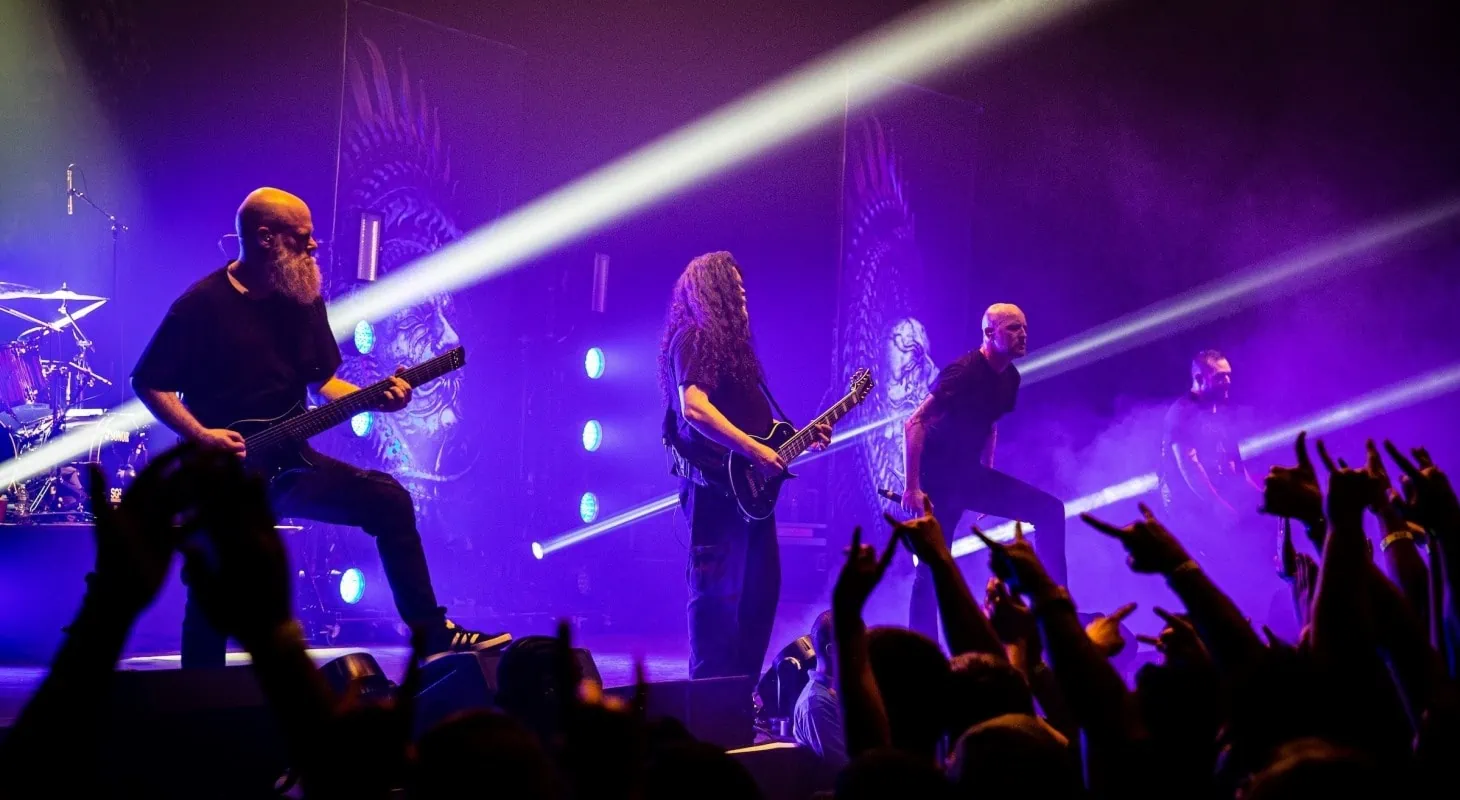Sometimes I forget that Meshuggah has been around for almost forty years. Sabbath, Maiden, and Metallica notwithstanding, Meshuggah might be the single most influential band in metal. Their unapologetically cerebral approach to death metal inspired countless bands and subgenres. It’s thanks to Meshuggah that the word “djent” entered metalhead lexicon.
Perhaps the main reason Meshuggah feel more vital and recent than they are is their massive surge in popularity in the late oughts, due in no small part to the huge success of obZen in 2007.
With that record, particularly the song “Bleed,” Meshuggah, if they didn’t enter the mainstream, certainly approached what passes for mainstream in extreme metal circles.
With their demanding, fast-paced polyrhythms and down-tuned guitars, Meshuggah’s sound can seem daunting to capture. However, with the right gear, devoted headbangers can evoke some of the brutal ferocity of Meshuggah’s greatest work.
Table of Contents
Meshuggah Guitars
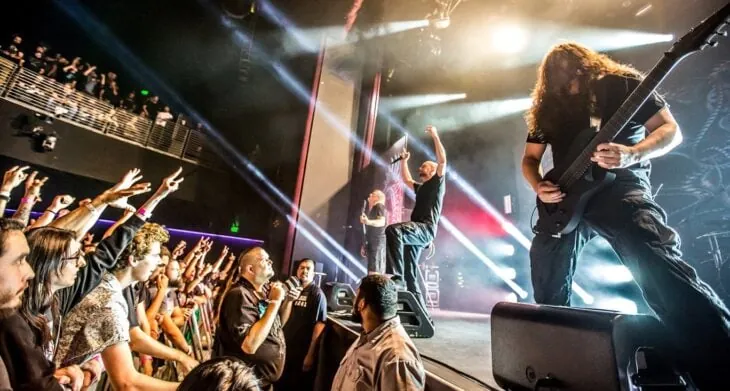
Meshuggah, like so many other great metal bands, boasts a twin-guitar attack. Their dual axemen are Fredrik Carl Thordendal, on lead guitar, and Mårten Hans Hagström, on rhythm guitar.
Hagström was heavily influenced by the rhythm stylings of Metallica axeman James Hetfield, while Thordendal draws more from the fusion-jazz stylings of Allan Holdsworth. This interplay is the cornerstone of the Meshuggah sound.
Curiously, despite their different playing styles, both Meshuggah axemen wield similar guitars. They both favor 8-string or 7-string Ibanez guitars, and have done for most of their careers.
Both guitar players prefer to use a Lundgren Model 8 pickup in their Ibanez guitars, high-powered pickups tweaked for the broad frequency range of 7- and 8-string guitars.
At the top of the line for Meshuggah guitars is the signature model from Ibanez, the M8M. For those readers, like me, who don’t have the budget handy for such an instrument, there are plenty of more wallet-friendly alternatives.

The 7-string Iceman offers a body shape evocative of some of the finest names in Swedish rock and metal, perfect for a Meshuggah fan. There’s also an entry-level 7-string RG model. Thordendal actually played various iterations of extended-range Iceman and RG shapes over the years, so either of these would be a feasible option.
If you’re going for an 8-string guitar more appropriate for Meshuggah’s post-Nothing work, it’s hard to go past the Meshuggah signature 8-string Ibanez, which has the added bonus of a price tag less than half of that of the M8M.
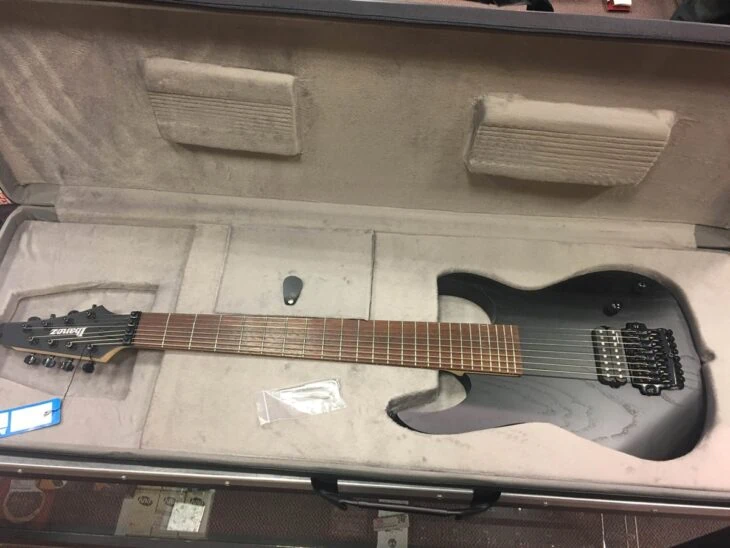
Otherwise, I’d recommend the excellent Ibanez RG8.
The critical thing with your choice of guitar is 7 or 8 strings, an alder or ash body, and, if possible, a high-output Lundgren pickup.
Anyone equally interested in 7- and 8-string guitars would, at least for Meshuggah, do well to pick an 8-string. The 8-string has all the capability of a 7-string, with an additional string for further downtuning. A 7-string will never be able to really get as low as an 8-string.
In fact, Meshuggah learned that lesson themselves while recording Nothing, as they experienced ongoing tuning issues in attempting to downtune their 7-string guitars.
Meshuggah Amps
For the recording of Chaosphere, both Meshuggah guitarists played Mesa/Boogie Dual Rectifiers.
They have since moved on to custom-built Fortin amplifier heads and AXE-FX units.
It should come as no surprise to anyone familiar with Meshuggah’s music that they use a lot of gain in their tone. The sound of high-gain chugging inspired the term “djent,” used to describe both their tone and the genre of music Meshuggah inspired.
To get anywhere close to the Meshuggah sound, you’ll need an amp that “djents.”
That means high gain.
Given the band’s previous affection for Mesa/Boogie amplification around the Chaosphere era, I strongly recommend the Mini Rectifier, which offers a similar tone without the ear-shattering volume.
The other amp I would recommend for metal is the excellent EVH 5150 Combo, which offers more gain than its namesake, the legendary Edward Van Halen, ever used.

If even the Mini Rectifier is too much, there’s another, far smaller amplifier, that will get you in the ballpark for the Meshuggah tone.
The Hughes & Kettner Spirit Of Metal is a 25-watt nano amp about the size of a juice box that offers enough gain to get you in the zone for Meshuggah tones.

The Spirit of Metal lacks a conventional three-band EQ, and will probably require an additional EQ pedal or booster in the signal chain to access the finer points of the Meshuggah tone, but it’s a viable starting point for players on a budget.
Meshuggah Amp Settings
I’ve based the below amp settings on the tones on obZen, but I found them absolutely workable for playing Chaosphere material as well.
It’s important to note that far more important than the amp settings is your playing technique. Meshuggah material is incredibly demanding. If you closely watch Thordendal in action, his right hand barely moves.
You’ll need to refine your right-hand muting and alternative picking technique, particularly to achieve the aggressive, chugging effect of Meshuggah’s palm muting.
Master Volume: 8
Meshuggah’s music demands high volume. You want to really push some air around when you’re playing these songs.
Gain: 7
You’ll need a lot of gain for this tone. I’d recommend starting at 7, depending on your amp, and tweaking accordingly. Reduce gain if the tone becomes at all mushy. Increase gain if it becomes thin.
Bass: 2-3
Given that you’ll be playing a guitar with extra low end, you really don’t need much bass in your tone.
Mids: 8
There’s plenty of midrange to this tone. Start at 8 and reduce if it becomes at all nasally.
Treble: 8
You need treble for the thick, tight, muted picking sound of Meshuggah.
Meshuggah Pedals
Meshuggah embraced multi-effects pedals early on. Hagström played a Line6 Pod for a few years, and both guitarists now tour with AXE-FX units.
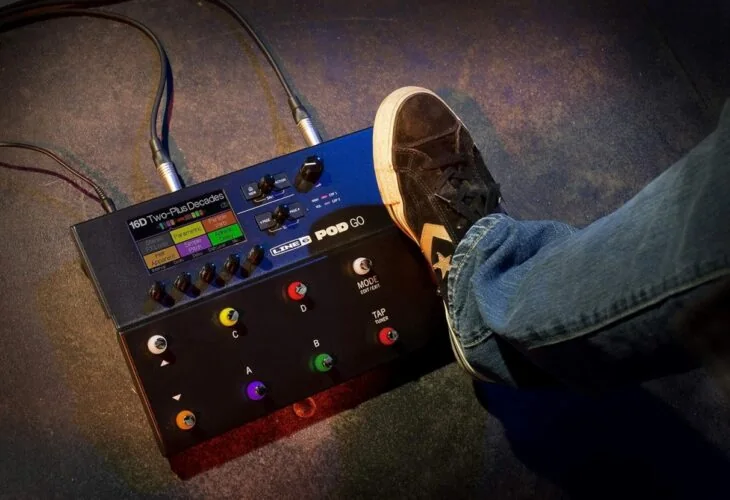
Thordendal, for years, used a custom-made device for his lead playing. The natural-sounding staccato leads embrace varying dynamics, drawing more from jazzy horn-section lead lines than from extreme metal.
To achieve this, Thordendal used a MIDI breath controller. Mastering this technique took Thordendal years, and most guitar players might find it easier simply to add a volume pedal to their rig to evoke Thordendal’s dynamic control.
Both used TC Electronic Line Drivers as clean boosts in the 90s, but have since moved on to other means of signal boosting. The closest modern equivalent is the TC Electronic Spark booster, which can help tighten up a flabby-sounding amp and make sure your tone is sharp and aggressive.
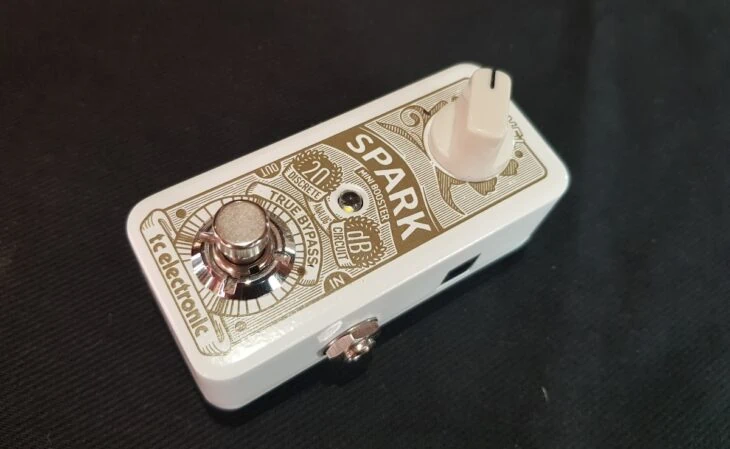
Hagström in particular prefers the Pigtronix Philosopher King. I’d recommend the miniature cousin to the Philosopher King, the Philosopher’s Tone, for compression and sustain.
Final Word
Meshuggah’s extreme metal tone is certainly not for the faint of heart. However, for the truly devoted player, capturing some of the Meshuggah sound could well be the key that unlocks the next level of their playing.
Few metal bands are as technically demanding and uncompromisingly brutal as Meshuggah. They’ve straddled the line between death and prog metal for close to forty years now, and show no signs of slowing down.
Armed with an 8-string Ibanez with a suitably powerful pickup, a good high-gain amp and a painstakingly refined picking technique, just about any guitar player can get nice and close to the Meshuggah sound.

